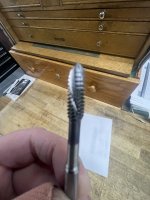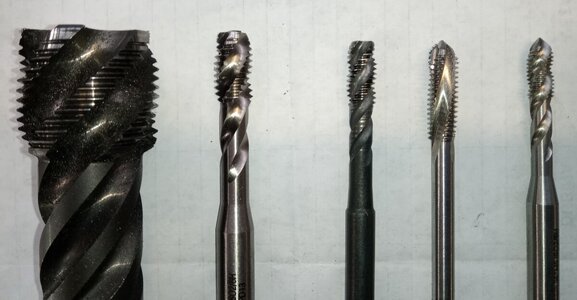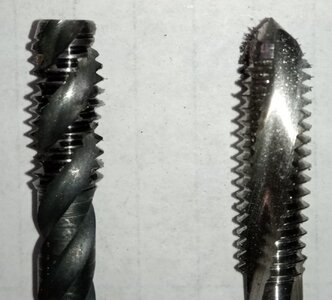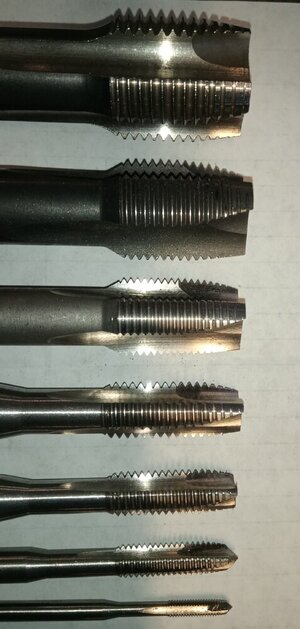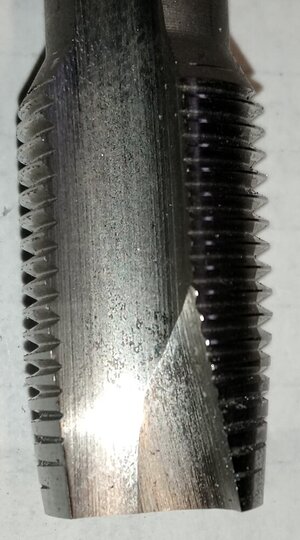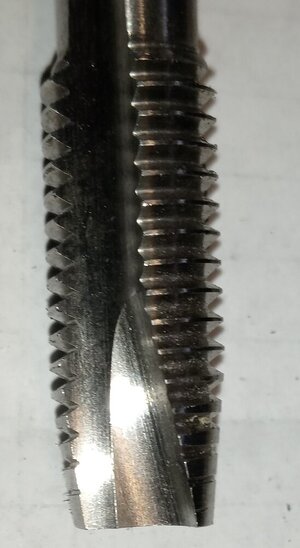Al Smith
Here For The Long Haul!
- Local time
- 12:12 PM
- User ID
- 537
- Joined
- Jan 14, 2016
- Messages
- 6,132
- Reaction score
- 13,533
- Location
- North western Ohio
I have no idea who made those carbide bits .Titanium coated .I think they were used to drill oil holes in steel automotive engine crankshafts .Ford motor company .For me they were just free salvage .I've got larger solid carbide bits but those are in my shop .I've used those to drill the heads from 3/4" socket head grade 8 bolts from brush chippers .Once you get the tension relieved on the bolt under a situation like that you can "peck " it right out . BTW it's not a 5 minute job .
In the CNC application I think those went into a holder that acted like draw collett and those into the spindle with a locking device .When they changed the tools it was as a unit not just the bit .In my use it's just in a 14 N Jacobs chuck .In the Bridgeport mill that's held in the spindle with a threaded drawbar system .
In the CNC application I think those went into a holder that acted like draw collett and those into the spindle with a locking device .When they changed the tools it was as a unit not just the bit .In my use it's just in a 14 N Jacobs chuck .In the Bridgeport mill that's held in the spindle with a threaded drawbar system .






